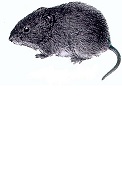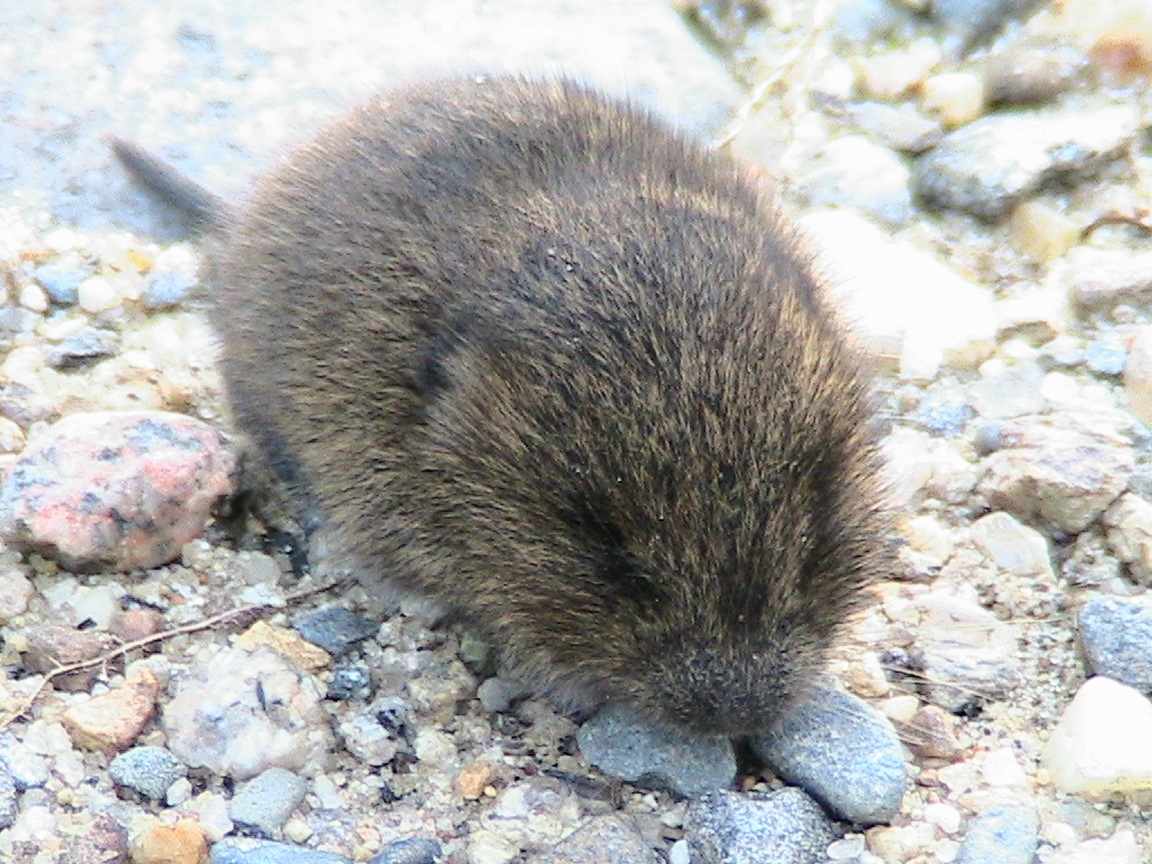 Voles in the Garden - March 23, 2016 Jeff Schalau, Agent, Agriculture & Natural Resources University of Arizona Cooperative Extension, Yavapai County Voles (Microtus spp.) are small, mouse-like animals with stocky bodies, short legs and a short tail. In Arizona, we have several species. Their underfur is dense and covered with thicker, longer guard hairs. Although many color variations may occur, voles typically are brown or gray. Twenty-three vole species are known in the U.S. and at least three of these are found in Arizona. Voles are sometimes mistakenly identified as mice, pocket gophers, and moles. However, mice have long tails, pocket gophers have large heads and muscular, clawed forelegs, and moles are not known to exist in Arizona. In general, voles prefer areas with abundant grass cover, other herbaceous plants, or litter. Voles can often be found in orchards and cultivated fields where ground cover is present. They are active both day and night and throughout the year. Voles eat a variety of plants and animals. They frequently forage on grasses, forbs, roots, bark, snails, slugs, and insects. To find food, voles construct tunnels and surface runways and live in adjacent burrows. Their burrows have open entrances, are smaller in diameter than ground squirrel burrows, and not plugged with soil like gopher burrows. Several adults and young can live in these runway systems. This intricate network of tunnels and burrows provide voles with excellent shelter from the weather and offer protection from predators. Voles breed throughout the year, with peaks occurring during spring and summer. Voles can produce up to five litters per year ranging in size from 1 to 11 young. Although gestation periods vary slightly among species, 21 days is the average length of gestation for voles. Young are weaned by the time they are 21 days old, and females are sexually mature within 40 days. Voles are subject to large population fluctuations which can peak every 2 to 5 years, but these cycles are not predictable. Factors which have been shown to influence population levels include dispersal rates, food quality, climate, predation, physiological stress, and genetics. Voles can cause severe damage to orchards, ornamentals, and tree plantings by chewing and removing the bark at the base of seedlings and mature trees. This damage is called “girdling”. Girdling of woody plants primarily occurs during fall and winter. Field crops, lawns, and golf courses also may be damaged by vole’s extensive runway and tunnel systems. Fortunately, voles pose no major public health concerns because of their infrequent contact with humans. However, they can harbor disease organisms, such as plague and tularemia. For this reason, voles should never be handled. If you have to handle a vole, or any other species of wildlife, you should wear the appropriate protective clothing (e.g., leather gloves). Voles are classified as nongame mammals and are protected by Arizona state law. However, controls can be implemented when voles are causing significant damage. Girdling damage and gnaw marks caused by voles are similar to that of many other species of wildlife, particularly rabbits. This often leads individuals to believe vole damage is caused by other wildlife species (rabbits). Vole girdling is characterized by non-uniform gnaw marks which occur at various angles and in irregular patches. In contrast, rabbits clip branches with neat, clean cuts. The elimination of weeds, ground cover, and litter around lawns and ornamental plantings can reduce habitat suitability for voles and lead to a decreased likelihood of vole damage. Additionally, soil cultivation destroys vole runway-systems. Individual trees can be protected by cylinders made of hardware cloth (like those used for beavers). The mesh size of the hardware cloth should be 1/4 inch in size and the device buried at least 6 inches below the ground surface to ensure that voles will not burrow under the hardware cloth and gain access to the plant. I recently got a very good look at a vole when my cat, Woodrow, brought a live one into the house and it promptly escaped behind the refrigerator. After pulling out the refrigerator, the vole appeared shaken but uninjured. I grabbed it with a gloved hand. It didn’t even try to bite me and seemed relaxed in my hand. I took it outside and released it in a grassy area. I then observed it for a few minutes as it moved adeptly through and under the living grass plants. See the online edition (URL below) for additional information and photos. Follow the Backyard Gardener on Twitter – use the link on the BYG website. If you have other gardening questions, call the Master Gardener help line in the Camp Verde office at 928-554-8992 or e-mail us at verdevalleymg@gmail.com and be sure to include your name, address and phone number. Find past Backyard Gardener columns or provide feedback at the Backyard Gardener web site: http://cals.arizona.edu/yavapai/anr/hort/byg/.  Additional Resources Voles Utah State University Extension extension.usu.edu/htm/publications/file=6370 Voles (Meadow Mice) University of California Agriculture and Natural Resources www.ipm.ucdavis.edu/PMG/PESTNOTES/pn7439.html |